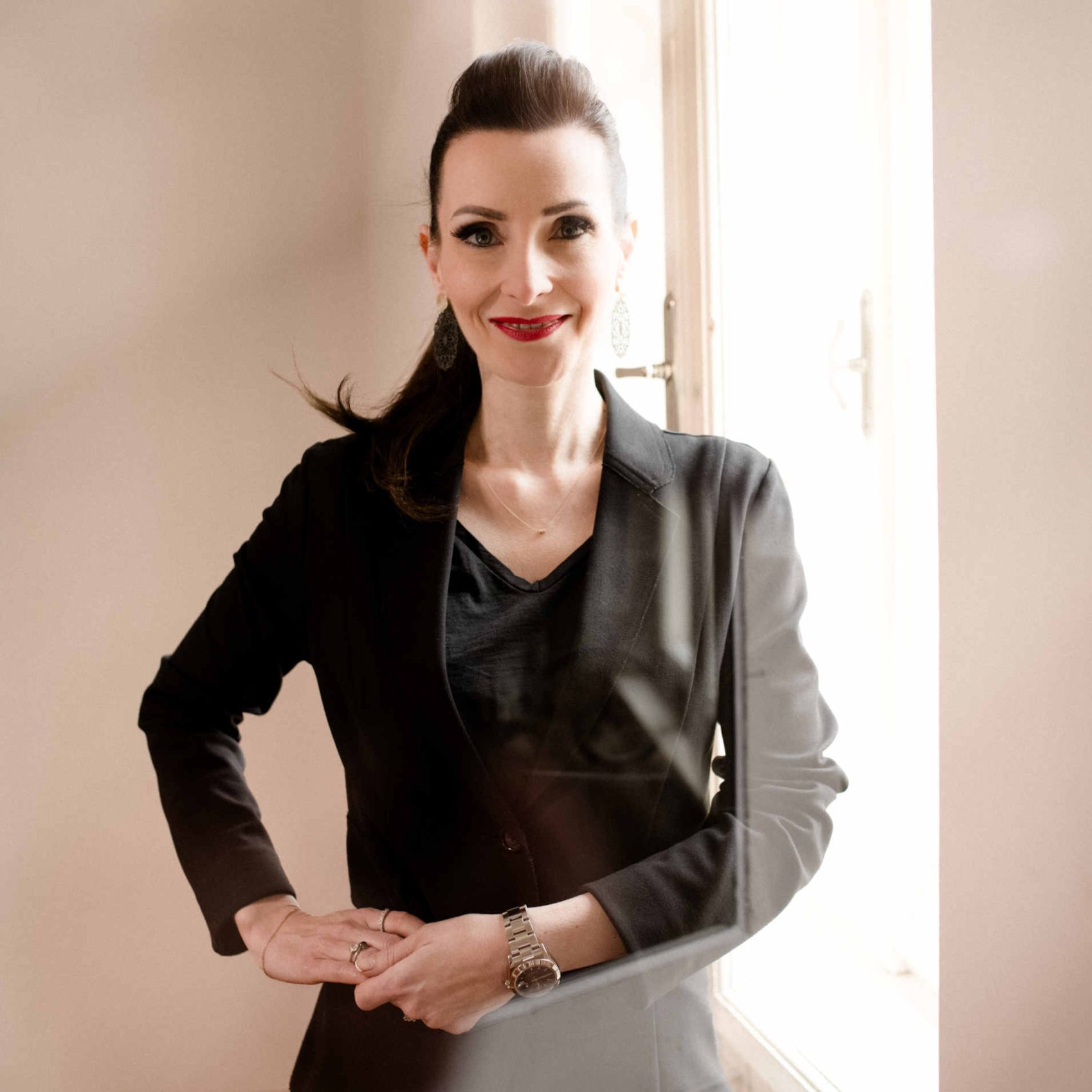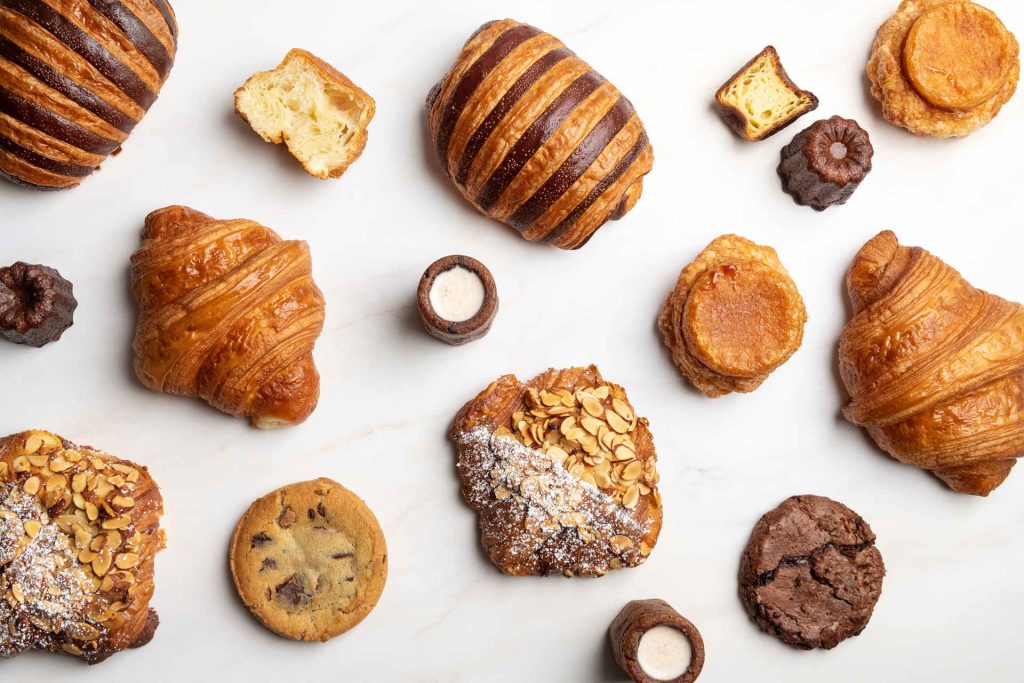
„Making croissants is a labor of love and dedication – a lifelong baking project.”
Dominique Ansel
The secrets behind the perfect croissant – from the butter block to the honeycomb structure
Making croissants is a true art form that requires dedication, patience and precision. Dominique Ansel, the renowned inventor of the Cronut, shares his valuable insights and tips for baking the perfect croissant. Immerse yourself in the world of Viennoiserie and learn the techniques that turn simple ingredients into a masterpiece.
What makes a croissant so special?
A croissant consists of just a few ingredients: butter, flour, water, egg, sugar, cream and salt. But mastering the correct technique takes years of practice and refinement. Dominique Ansel describes croissant making as a constant journey to perfection. Why? Because every detail, from laminating the dough to fermentation, makes the difference between a good croissant and an outstanding one. A croissant should not be too long and too flat, it is characterized by a fluffiness, with high layers and golden color, shiny, even egg wash. The croissant must have a nice honeycomb crumb and must not have risen too little. If it has not risen enough, the croissant will have uneven, large air pockets.
The art of laminating
Laminating is the process of layering dough and butter into very thin, alternating layers. This technique is crucial to the characteristic flakiness and lightness of a croissant. During laminating, a block of butter is folded into the dough and rolled out and folded again multiple times to create numerous layers.
Why are the layers important?
A well-made croissant should have a honeycomb-like structure when cut. These layers not only provide the light and airy texture, but also the distinctive taste and mouthfeel.
DKA – Dominiques Kouign Amann
Another highlight from Dominique Ansel's kitchen is the DKA, a type of caramelized croissant with delicate, flaky layers on the inside and a crispy crust on the outside. It is his trademark and bestseller.
Pain au Chocolat
For chocolate lovers, Pain au Chocolat is a must. With three chocolate bars inside, it offers an intense chocolate experience in every bite.
What is Viennoiserie?
The term Viennoiserie comes from French and means “things from Vienna”. This category includes baked goods made from yeast dough such as croissants, Danish pastries, pain au chocolat, kouign amann and brioches.
Where does the croissant really come from?
Although the croissant is considered a French symbol, its roots come from Austria. The Austrian Kipferl, a small, curved white pastry, is considered the forerunner of today's croissant.
How healthy is a croissant?
Croissants are a high-calorie delicacy. Due to the combination of simple carbohydrates, sugar and a lot of fat in the puff pastry, they are not particularly healthy, but they offer an incomparable taste experience.
How many layers does a croissant have?
A traditional croissant has 27 layers of dough and fat. These layers are created by the repeated rolling and folding of the dough during the lamination process.
Making croissants is an art that requires time, patience and precision. With Dominique Ansel's tips and techniques, you too can experience the magic of croissant making and maybe even bake the perfect croissant. Immerse yourself in the world of Viennoiserie and enjoy every crunchy, buttery bit of this French classic. No matter how fast the world turns, traditional pastries will always have a place in our lives.

Imola is much more than just a race track: the city combines top-class cuisine, cultural monuments, and traditional producers to create an experience that delights connoisseurs, Italy fans, and curious travelers alike. From 2-star gastronomy at Ristorante San Domenico to creative pizza experiences and slow food osterie to historic libraries, palazzi, and award-winning wineries: this guide shows you the best places for cuisine, culture, and shopping—authentic, high-quality, and with real added value for your next visit to Imola.
The two-star Berlin restaurant Horváth returns to Vienna in early 2026 with an exclusive pop-up, presenting an uncompromising new menu based on “emancipated vegetable cuisine.” For two weeks, Sebastian and Jeannine Frank’s team will take over the Herzig restaurant and serve a 7-course menu that shows how innovative, precise, and luxurious vegetables can be today. A culinary highlight for foodies, fine dining fans, and anyone who doesn’t want to miss Austria’s most exciting pop-up experience of 2026.
This time, Sebastian Frank is taking an even more uncompromising approach, with a new menu and a clear message: vegetables can be luxurious – even without caviar.
Today, experiential dining is one of the strongest drivers of modern hospitality – emotional, sensual, and unforgettable. Formats such as Toni Mörwald’s PALAZZO in Vienna show how perfectly cuisine, culture, and staging can merge and why spending time together has become the most valuable luxury. “Better Together” exemplifies a trend that is shaping the industry and booming as a gift idea, especially at Christmas: enjoyment, entertainment, and shared amazement in an evening full of magic.


The secrets behind the perfect croissant – from the butter block to the honeycomb structure
Making croissants is a true art form that requires dedication, patience and precision. Dominique Ansel, the renowned inventor of the Cronut, shares his valuable insights and tips for baking the perfect croissant. Immerse yourself in the world of Viennoiserie and learn the techniques that turn simple ingredients into a masterpiece.